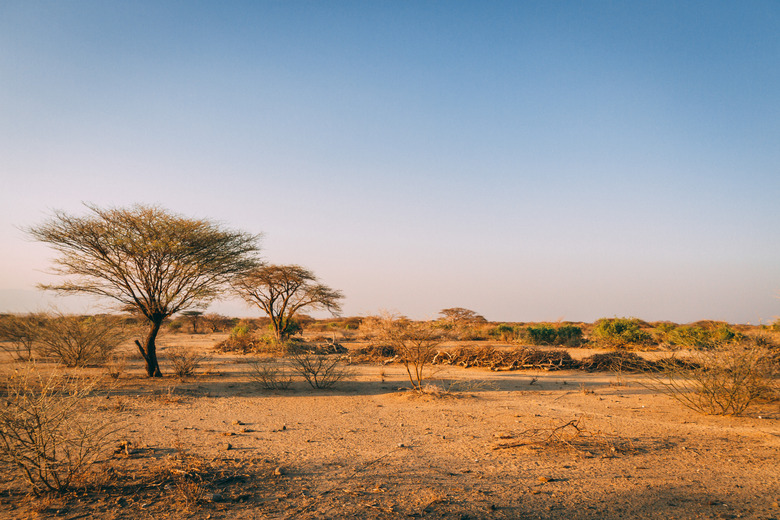Natural Resources For People In The Savanna Grasslands
While the standard image of the savanna is that of an endless plain with little more than tall grasses and the occasional tree, the savanna grasslands are full of natural resources. Those who call these southern Africa grasslands home have adapted to that which is available to them, from scarce water resources to thrifty use of native trees.
Water
Water
Water is necessary for all life, and the savanna grasslands are typically dry with little rain over the course of the year. Major rivers provide much of the water for the people of the savanna, and large population centers typically develop in these areas. It is such a valuable resources that in outlying areas, drilling wells can mean the success of a village.
Wetlands — although few and far between — also play an important role as natural resources. Herds of livestock and of wild game animals depend on wetlands to sustain life. Over-grazing has put these natural resources in jeopardy, along with landscape changes created by the harvesting and transport of water.
Land
Land
The soil of the savannas is generally nutrient-rich, largely because of the amount of grasses and animal material that is decayed and returned to the soil. The lack of rain, however, makes farming and keeping herds of livestock a challenge. Irrigation is encouraged, and correctly managing runoff while conserving water can ensure that individuals make the most of the soil and nutrients available.
Crops such as corn, sorghum, wheat and sugar cane make up important foodstuffs both to supply those who live in the savanna as well as to export. Cotton saw a jump in planted area because of demand from the private sector.
Livestock
Livestock
The grasslands present ample grazing area for herds of livestock that are then used for their milk or their meat. Grasses are hardy and well-adapted to surviving with infrequent, unpredictable rains, making it possible to graze livestock without the need for grass management or pasture rotations that are necessary in other areas. Animal waste also contributes to the fertility of the soil.
The flat plains of the grassland are well suited to supporting herds of cattle, sheep and goats. In recent years, pigs and poultry have also been on the increase.
Wood
Wood
Trees are an important commodity in all areas, whether they are being harvested for building lumber or are being used as fuel. Mopane and acacia trees are commonly used for both purposes; the mopane is a popular fuel source because it burns slowly while not releasing much smoke. In addition to harvesting wood that is used by the family, some individuals use wood as a source of income; it is harvested from remote areas then brought into the village or town to trade for money or other goods.
These hardy types of trees are well suited to the arid grasslands, but with an increase in the population there is always the risk of using trees faster than they are replenished. Trimmings from wood for construction are seldom wasted, and there is a trend toward concrete-block housing in more urban areas, decreasing the demand for native woods.
Cite This Article
MLA
Durkee, Debra. "Natural Resources For People In The Savanna Grasslands" sciencing.com, https://www.sciencing.com/natural-resources-people-savanna-grasslands-8260183/. 22 November 2019.
APA
Durkee, Debra. (2019, November 22). Natural Resources For People In The Savanna Grasslands. sciencing.com. Retrieved from https://www.sciencing.com/natural-resources-people-savanna-grasslands-8260183/
Chicago
Durkee, Debra. Natural Resources For People In The Savanna Grasslands last modified March 24, 2022. https://www.sciencing.com/natural-resources-people-savanna-grasslands-8260183/
